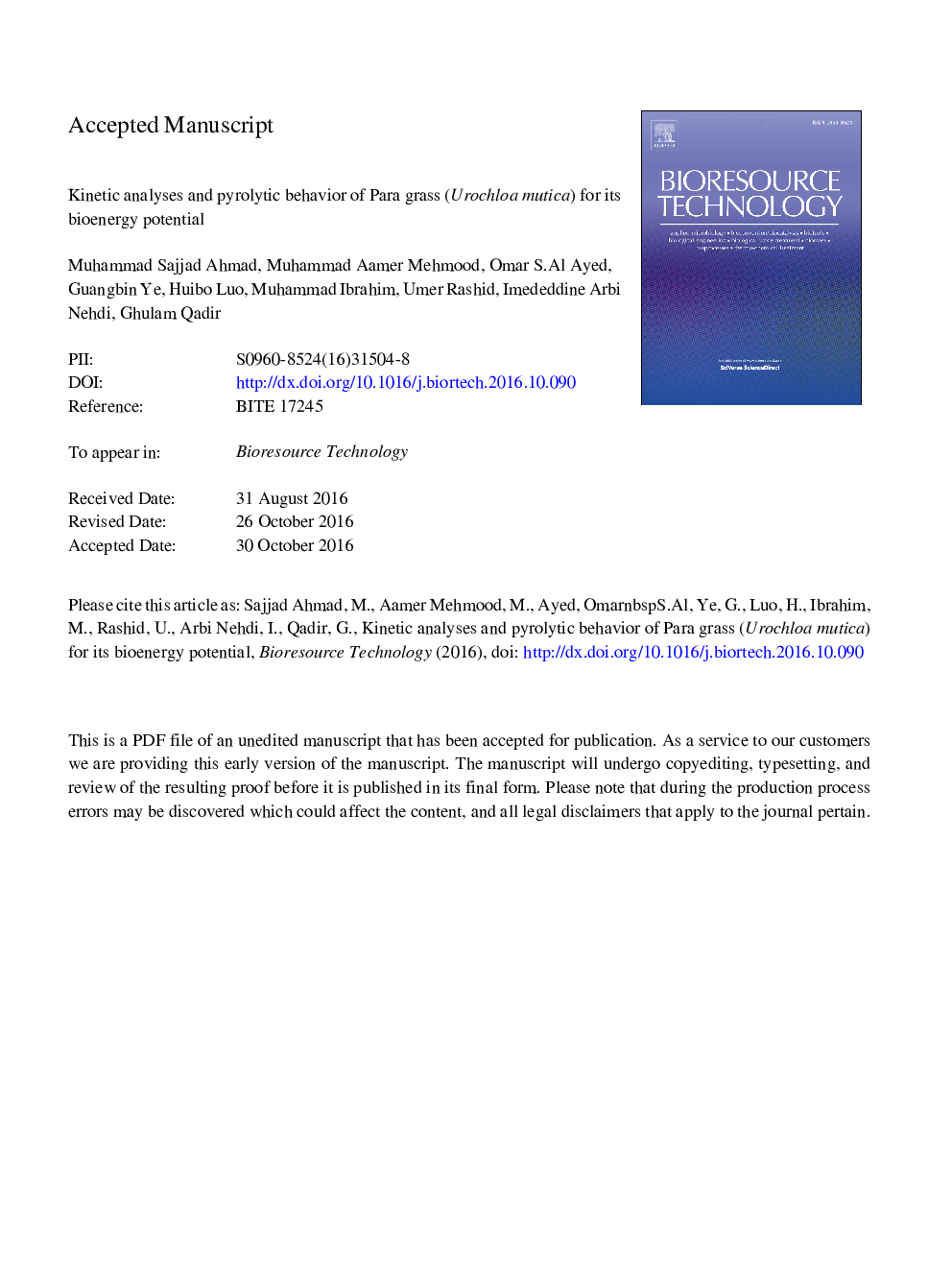| Article ID | Journal | Published Year | Pages | File Type |
|---|---|---|---|---|
| 4997895 | Bioresource Technology | 2017 | 25 Pages |
Abstract
The biomass of Urochloa mutica was subjected to thermal degradation analyses to understand its pyrolytic behavior for bioenergy production. Thermal degradation experiments were performed at three different heating rates, 10, 30 and 50 °C minâ1 using simultaneous thermogravimetric-differential scanning calorimetric analyzer, under an inert environment. The kinetic analyses were performed using isoconversional models of Kissenger-Akahira-Sunose (KAS) and Flynn-Wall-Ozawa (FWO). The high heating value was calculated as 15.04 MJ molâ1. The activation energy (E) values were shown to be ranging from 103 through 233 kJ molâ1. Pre-exponential factors (A) indicated the reaction to follow first order kinetics. Gibbs free energy (ÎG) was measured to be ranging from 169 to 173 kJ molâ1 and 168 to 172 kJ molâ1, calculated by KAS and FWO methods, respectively. We have shown that Para grass biomass has considerable bioenergy potential comparable to established bioenergy crops such as switchgrass and miscanthus.
Related Topics
Physical Sciences and Engineering
Chemical Engineering
Process Chemistry and Technology
Authors
Muhammad Sajjad Ahmad, Muhammad Aamer Mehmood, Omar S. Al Ayed, Guangbin Ye, Huibo Luo, Muhammad Ibrahim, Umer Rashid, Imededdine Arbi Nehdi, Ghulam Qadir,
